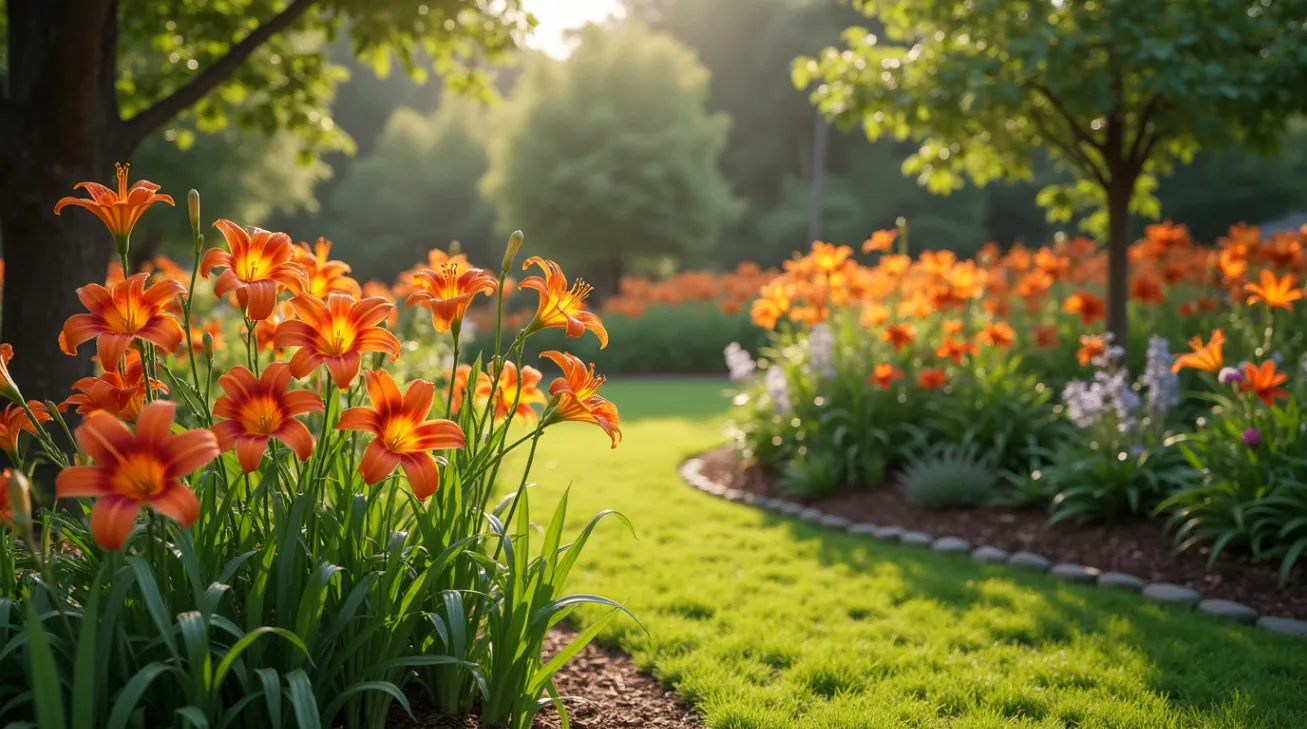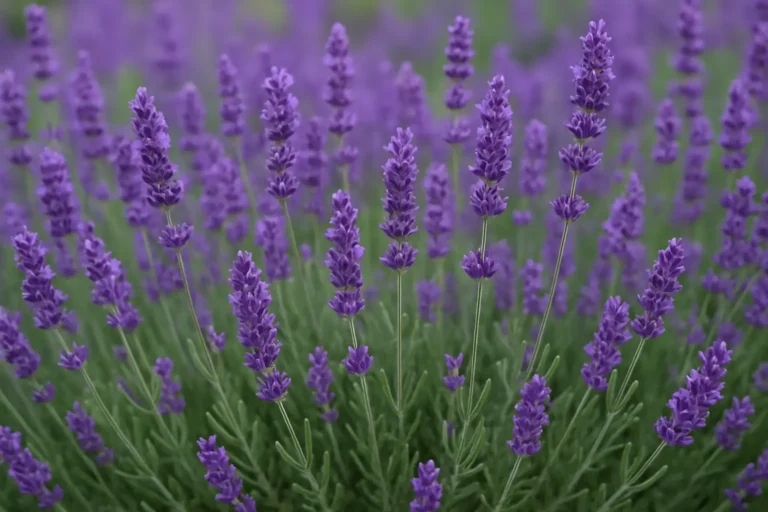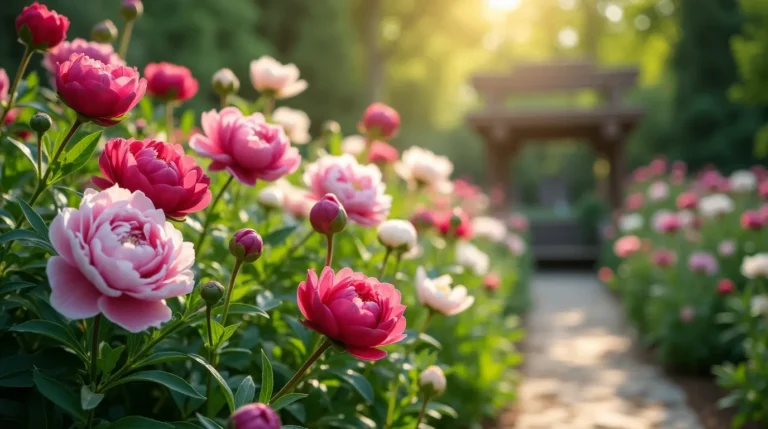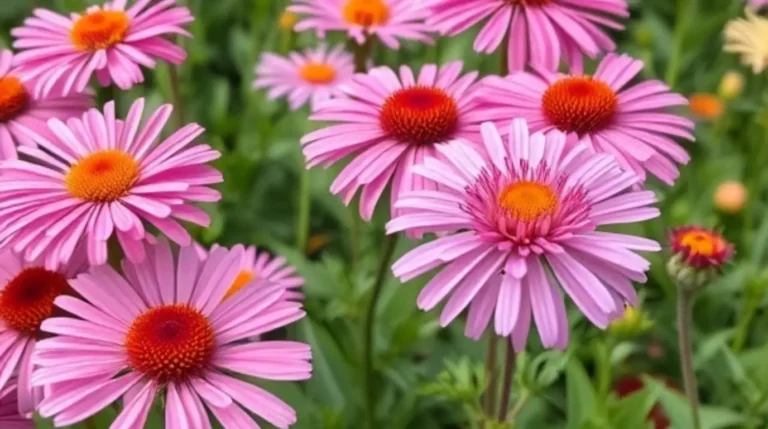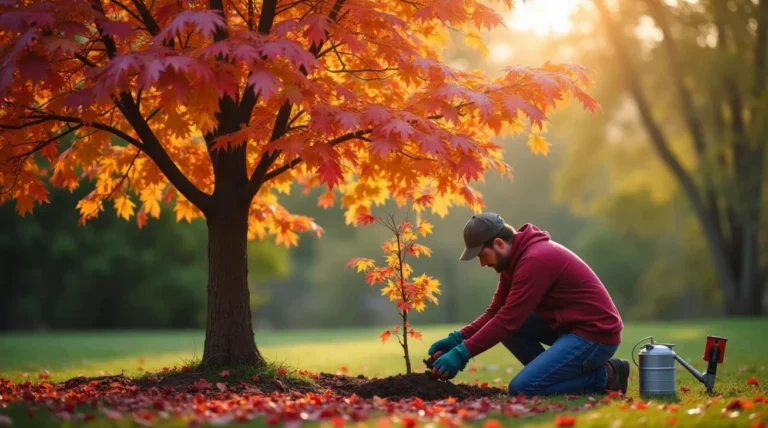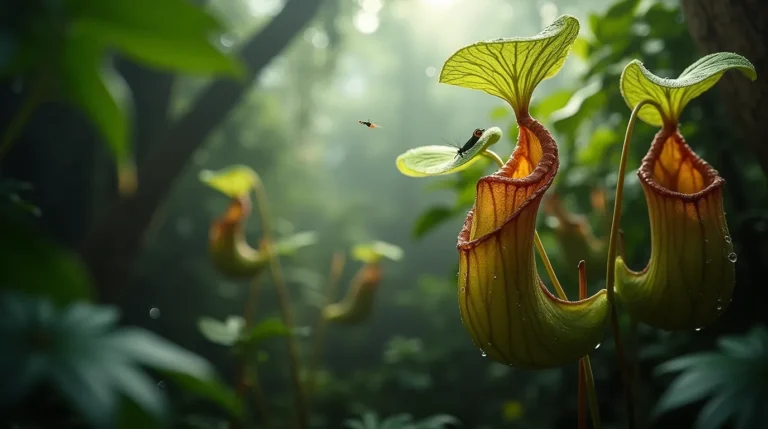Daylily Care Guide: Tips for Growing and Cultivating Beautiful Daylilies
Table of Contents
Daylilies are among the most beloved perennial flowers for gardeners worldwide due to their vibrant colors, low maintenance, and adaptability to various conditions. With a long blooming period and a variety of cultivars to choose from, these stunning flowers are perfect for adding a pop of color to any garden. In this guide, we’ll explore everything you need to know about growing and caring for daylilies to help you create a thriving garden full of these resilient blooms.
What is a Daylily?
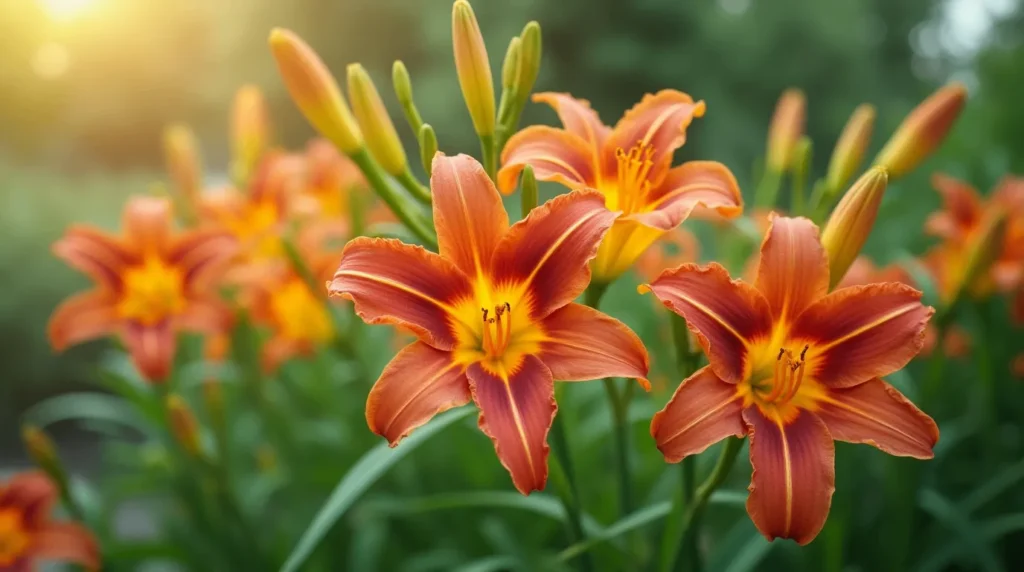
Daylilies (Hemerocallis spp.) are herbaceous perennials that are native to Asia. Despite the name, they are not true lilies. Each bloom lasts for only a day, hence the name “daylily,” but the plants produce multiple flowers over a long blooming period, making them a popular choice for gardens. Daylilies come in a wide range of colors, including yellow, orange, red, pink, and even bi-color variations.
Characteristics of Daylilies:
- Height: Varies from 1 to 4 feet depending on the cultivar.
- Bloom Time: Mid to late summer.
- Flower Colors: Yellow, red, orange, pink, purple, and more.
- Hardiness Zones: USDA zones 3-10.
- Light Requirements: Full sun to partial shade.
- Soil Requirements: Daylilies thrive in well-drained soil with a pH level ranging from slightly acidic to neutral.
How to Plant Daylilies
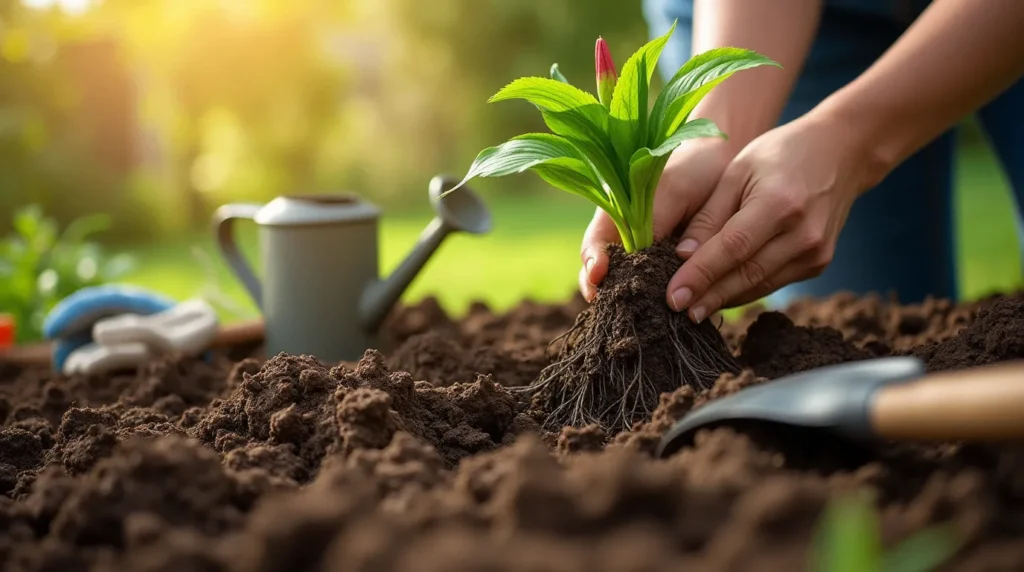
1. Choosing the Right Location
Daylilies thrive in locations that receive full sun for at least six hours a day. In hotter climates, they can tolerate partial shade during the hottest part of the day. Choose a spot in your garden that has good drainage, as standing water can cause root rot.
2. Soil Preparation
Daylilies grow best in soil with a slightly acidic to neutral pH range of 6.0 to 7.0. Enhance the soil quality by incorporating compost or well-aged manure to boost fertility and ensure good drainage. If your soil is heavy clay or very sandy, mix in organic matter to enhance the texture and water retention.
3. Planting Daylily
- Create a planting hole approximately 12 inches wide and 6 inches deep.
- Place each plant 18 to 24 inches apart for optimal spacing.
- Place the daylily plant in the hole, spreading out the roots gently.
- Cover the roots with soil, ensuring that the crown (where the roots and foliage meet) is at the soil level.
- Water generously after planting to help the soil settle firmly around the roots.
4. Watering and Mulching
Water newly planted daylilies regularly until they are well established. Mature plants are drought-tolerant, but for best performance, provide about 1 inch of water per week during the growing season. Mulch around the plants with 2-3 inches of organic mulch to retain moisture and suppress weeds.
Daylily Care Tips
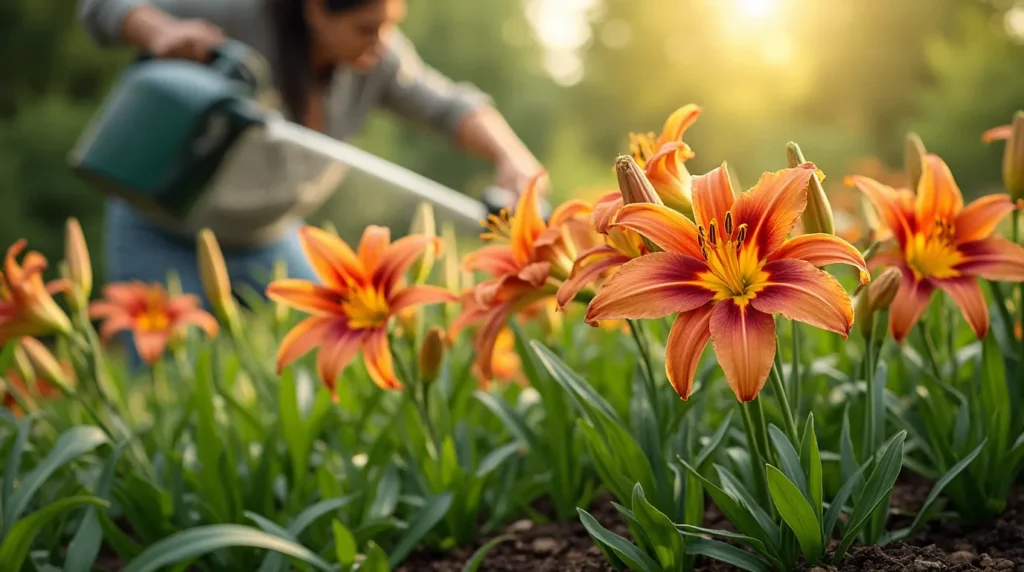
1. Fertilizing Daylilies
Feed daylilies in early spring with a balanced fertilizer such as 10-10-10 or 12-12-12. Repeat this after the main bloom period to encourage repeat flowering. Avoid applying too much fertilizer, as it may result in abundant leaf growth but fewer blooms.
2. Deadheading and Pruning
Remove spent blooms (deadheading) regularly to keep the plants looking neat and to promote more blooms. Once flowering is complete, trim the flower stalks down to the base of the plant. In late fall, trim the foliage to about 6-8 inches above the ground.
3. Dividing Daylilies
Daylilies can become crowded after a few years, leading to fewer blooms. Divide the plants every 3 to 5 years, either in early spring or late summer. Dig up the clumps, separate them into smaller sections, and replant them in a prepared location.
Common Pests and Diseases
Daylilies are generally hardy, but they can be affected by some pests and diseases:
- Aphids: Small, sap-sucking insects that can cause yellowing of leaves. Use insecticidal soap or neem oil for efficient pest management.
- Spider Mites: Tiny pests that cause stippling and webbing on the leaves. Boost humidity around the plants or apply a miticide as needed.
- Daylily Rust: A fungal disease that causes orange spots on the leaves. Eliminate infected foliage and use a fungicide if necessary.
Popular Daylily Varieties
1. Stella de Oro
This is one of the most popular daily varieties due to its compact size and continuous blooming habit. ‘Stella de Oro’ produces bright yellow blooms and is perfect for edging or container planting.
2. Ruby Spider
With large, deep red flowers and a bright yellow throat, ‘Ruby Spider’ is a standout variety. Its bold colors make it ideal as a focal point in the garden.
3. Happy Returns
Similar to ‘Stella de Oro,’ but with a lighter lemon-yellow color. ‘Happy Returns’ blooms from late spring to early fall, providing a long-lasting display.
Using Daylilies in Garden Design
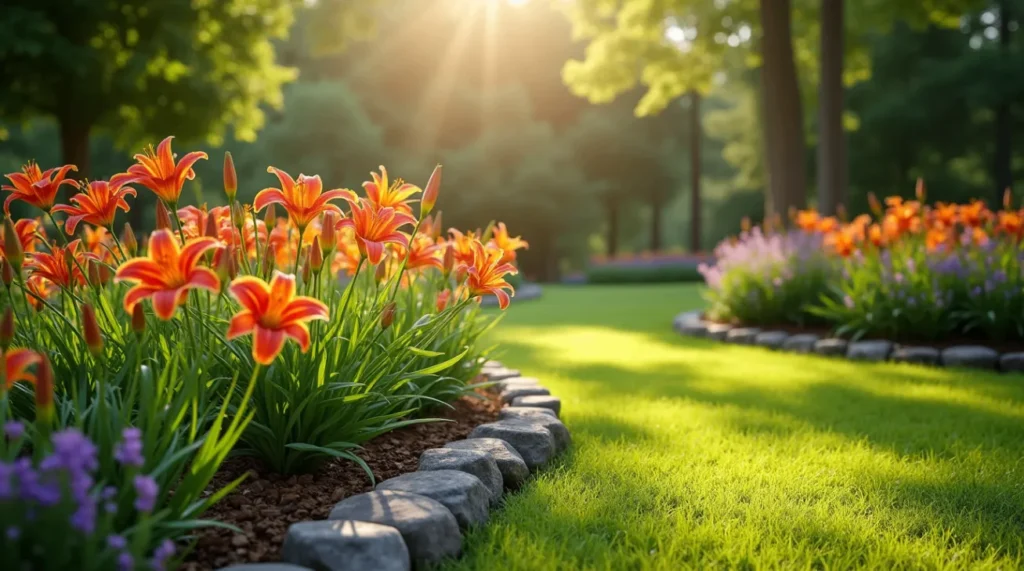
Daylilies are highly versatile and can complement a wide range of garden designs. They work well in mixed perennial borders, as ground cover, or as mass plantings. Combine them with ornamental grasses, peonies, or coneflowers for a stunning display. Due to their height variations, they can be used in the front, middle, or back of garden beds.
Daylilies in Containers
Dwarf varieties of daylilies can be grown in containers for patios and balconies. Make sure the container has proper drainage and fill it with a high-quality potting mix. Water regularly and fertilize every 6-8 weeks during the growing season.
FAQs About Daylilies
Q: How long do daily blooms last?
A: Each daylily bloom typically lasts only one day, but a single plant can produce dozens of blooms over several weeks, providing a long period of color.
Q: Can daylilies grow in the shade?
A: Daylilies can tolerate partial shade, especially in hot climates, but they perform best and produce the most blooms in full sun.
Q: Are daylilies deer-resistant?
A: While daylilies are not completely deer-resistant, they are less palatable than many other garden plants. If deer are a problem, consider using deer repellents or protective fencing.
Conclusion
Daylilies are a delightful addition to any garden, offering color, resilience, and ease of care. By selecting the right varieties and providing the ideal growing conditions, you can enjoy a stunning display of blooms year after year. Whether you’re a beginner or an experienced gardener, daylilies are a reliable and rewarding choice.

